|
In August 1922 the following cartoon by E H Shepard appeared in Punch magazine. Captioned ‘Our Holiday Puzzle Picture. What Are the Wild Waves Saying?’, it shows a bearded man in a rowing boat surrounded by people bathing in the sea. Unless you are an expert in either the history of British beards or eccentric and short-lived crazes (or both) you might struggle to solve the puzzle. In 1922, no answer to the question was given in the magazine because no answer was needed. The contemporary audience would have known the solution all too well – all the bathers (the ‘wild waves’ as Shepard called them) are shouting ‘Beaver!’ at the hapless bearded boatman. Even the toddler at the sea’s edge, barely old enough to wade without the support of his mother, joins in with the ‘Beaver!’ chorus. For those sporting beards, 1922 looks to have been something of a trial. In 1959, some insight into the ‘Beaver!’ phenomenon was provided in The Spectator: 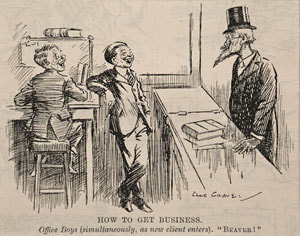 ‘When I was a boy there was a game called 'Beaver.' Except that it cost nothing to play and had rules which were simple to the point of inanity, it had little to recommend it; but for several months it enjoyed a nationwide vogue and provided music-hall comedians and humourists of the less subtle kind with an invaluable stand-by… It was a silly game. I don't know who invented it, or how it managed to catch on to the extent it did…’ As the cartoon below illustrates, Punch ascribed the invention of the game to students at Oxford University (the sub-caption reads ‘To Oxford is attributed the credit of inventing the game of “Beaver” in which you score points for spotting bearded men.’). 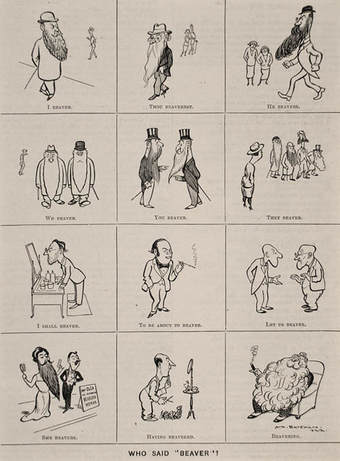 During the years of its publication, many odd and now-forgotten aspects of British life were reflected in the pages of Punch; ‘Beaver!’ did not escape the attention of those who wrote and drew for the magazine. Cartoonists including H M Bateman (left) and Leonard Brightwell (below) responded to the fad. ‘Beaver!’ also provided the impetus for a number of entries in the magazine’s Charivaria column. The rules may have been simple but as an article on The Atlantic website describes, ‘Beaver!’ was popular enough to provoke some enterprising soul to publish a book detailing the rules of the game (there is a copy in the British Library). ‘Beaver!’ was played by two people each attempting to be the first, upon sighting a bearded man (or woman – the elusive Queen Beaver), to call out ‘Beaver!’ The scoring system was based on that used in tennis as Lewis Baumer’s cartoon below illustrates. Mis-beavers – calling out ‘Beaver!’ only to discover that the poor beavered quarry was beardless – incurred a double-fault. We can only speculate as to why the word ‘Beaver’ was chosen as the game’s trigger. Beards and beavers are, of course, both hairy and there is a satisfying alliterative connection between the two words. Furthermore, beaver is also the name of the lower portion of the face guard of a helmet (Oxford English Dictionary). If we are to gauge the popularity of the game by its appearances in Punch, the ‘Beaver!’ fad seems to have lasted only a few months. Speed’s cartoon attributing the creation of the game to Oxford University was published in July 1922 (the craze would have been extant before this date, of course; how long before is not known). By the following January, Fougasse (below) had one bearded gentleman asking his similarly hirsute friend, ‘Now that the excitement seems to have finally died down, I wonder if you can tell me what was that joke about beavers?’ Clicking on the cartoons will take you to each piece’s full description. Click here for biographical details of the Punch cartoonists. Links to Sources The Atlantic (2010), Beaver! The Spectator (1959), Beards and the British, by Stria |
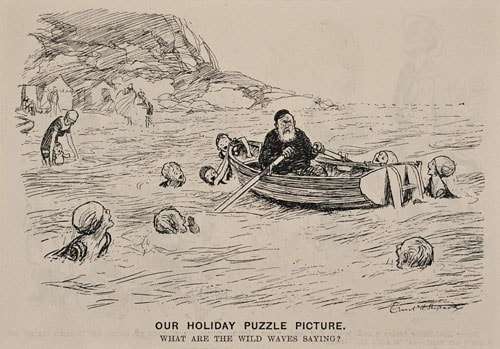
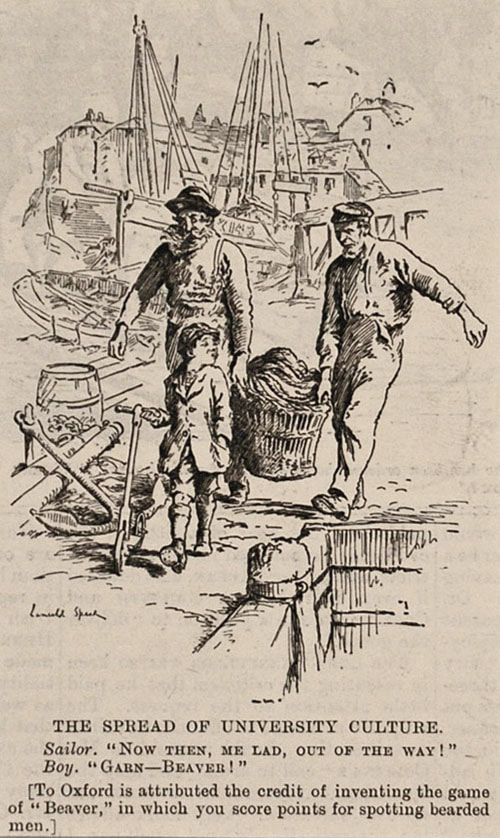
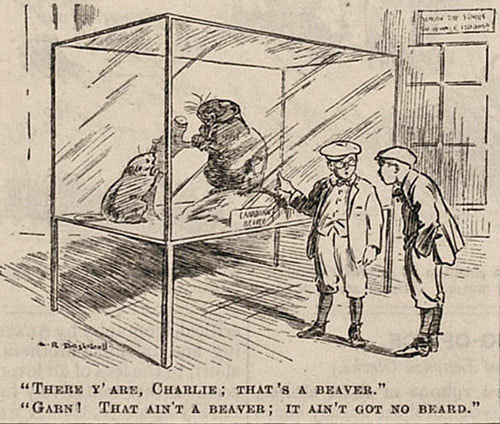
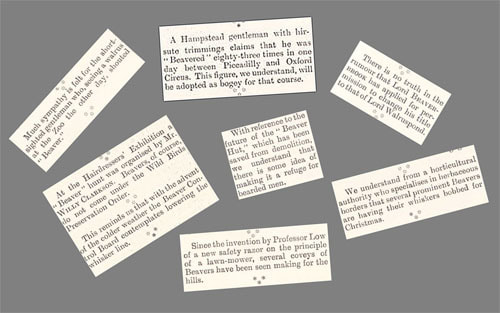
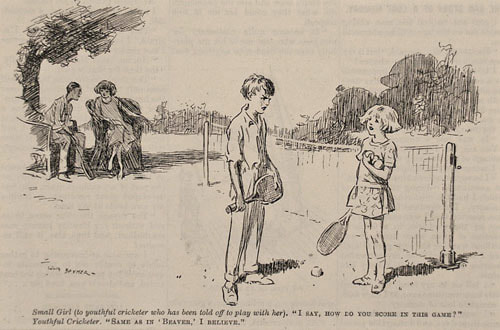
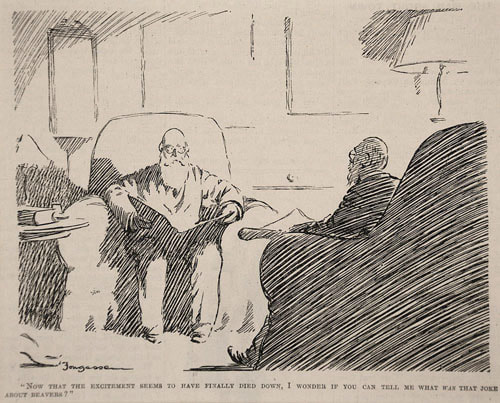

 RSS Feed
RSS Feed